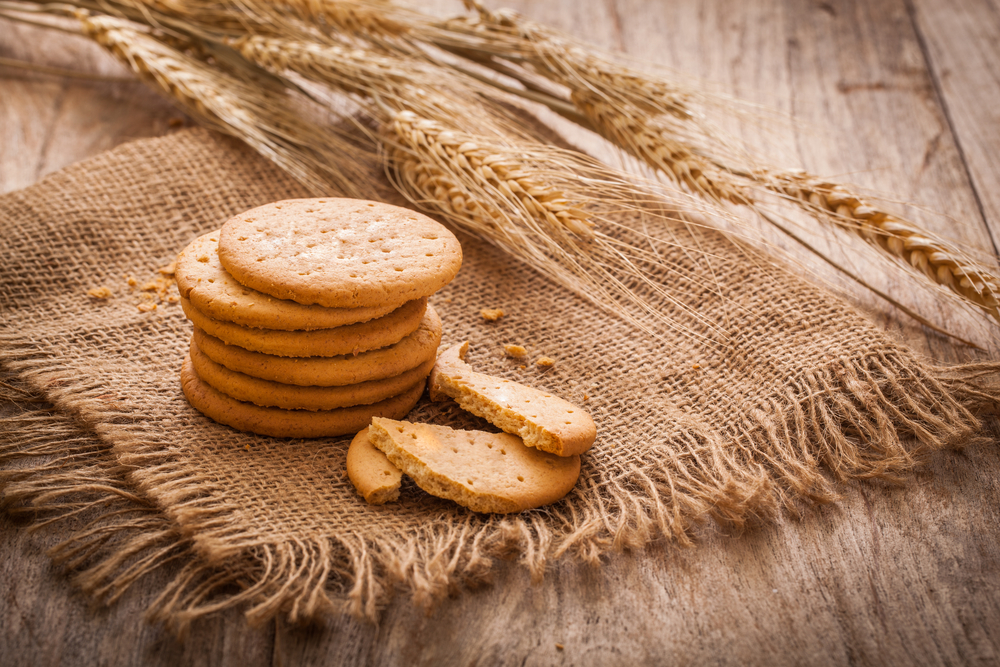I love biscuits, but sometimes I don’t finish the whole batch. Instead of throwing them away, I like to reheat them for a quick and easy breakfast or snack. One of my favorite methods is reheating biscuits in the microwave.

When reheating biscuits in the microwave, there are a few things to keep in mind to ensure they come out just as delicious as they were fresh out of the oven.
First, make sure to wrap each biscuit in a damp paper towel to prevent them from drying out. Second, set your microwave’s power level to around 50% or use the defrost mode if available.
Finally, heat the biscuits for 45-60 seconds, depending on their size and thickness.
By following these simple steps, you can enjoy warm and fluffy biscuits in just a matter of minutes. Whether you’re in a rush or just looking for a quick snack, reheating biscuits in the microwave is a great option.
Key Takeaways
- Wrapping biscuits in a damp paper towel before reheating in the microwave helps prevent them from drying out.
- Setting the microwave’s power level to around 50% or using the defrost mode helps ensure even heating.
- Reheating biscuits in the microwave is a quick and easy way to enjoy them again.
Preparing Biscuits for Reheating
When it comes to reheating biscuits in the microwave, it’s important to properly prepare them beforehand.
Here are a few steps to follow:
Thawing Frozen Biscuits
If you’re reheating frozen biscuits, you’ll need to thaw them first. To do this, simply take them out of the freezer and let them sit at room temperature for about 30 minutes.
Alternatively, you can thaw them in the microwave using the defrost setting. Be sure to remove any plastic wrapping or packaging before thawing.
Arranging Biscuits on Plate
Once your biscuits are thawed (if necessary), it’s time to arrange them on a microwave-safe plate. Make sure the plate is large enough to accommodate all of the biscuits without them touching.
You can also use a paper towel or damp paper towel to cover the biscuits, which will help prevent them from drying out during the reheating process.
When arranging the biscuits, be sure to leave some space between each one. This will help ensure that they heat up evenly and thoroughly.
If you’re reheating a large number of biscuits, you may need to do this in batches to avoid overcrowding the plate.
By following these simple steps, you can ensure that your biscuits are properly prepared for reheating in the microwave. With a little bit of care and attention, you can enjoy warm, fluffy biscuits in no time!
Reheating Biscuits in the Microwave
As a biscuit lover, I always find myself with leftovers that need reheating. Reheating biscuits in the microwave is a quick and easy way to enjoy them again.
In this section, I will share my tips on how to reheat biscuits in the microwave.
Setting the Microwave
The first step in reheating biscuits in the microwave is to set the power level. It is important to use a low power setting to avoid overheating and drying out the biscuits.
I recommend setting the microwave to medium power or around 50% power.
Monitoring Reheating Time
The next step is to monitor the reheating time. The exact time will depend on the size and number of biscuits you are reheating. A good starting point is around 20 seconds per biscuit.
However, it is important to check the biscuits after each interval to ensure they are not overheating. Overheating can result in a dry and tough texture.
To ensure even heating, arrange the biscuits at least half an inch apart on a microwave-safe plate. This will allow for proper circulation of the microwaves and prevent uneven reheating.
It is also important to note that reheating biscuits in the microwave may result in a loss of moisture. To prevent this, you can place a damp paper towel over the biscuits while reheating.
This will help retain moisture and prevent the biscuits from drying out.
In summary, reheating biscuits in the microwave is a quick and easy way to enjoy leftovers. To ensure the best results, set the microwave to a low power level and monitor the reheating time carefully.
Arrange the biscuits evenly on a microwave-safe plate and consider using a damp paper towel to retain moisture.
Alternative Reheating Methods

If you don’t have a microwave or prefer not to use one, there are other ways to reheat your biscuits. Here are a few alternative methods to try:
Using an Oven
Reheating biscuits in the oven is a popular option for getting that fresh taste again. Preheat the oven to 350 degrees Fahrenheit. While the oven is preheating, line a baking sheet with aluminum foil or parchment paper.
Place the biscuits on the baking sheet and make sure they’re at least one inch apart. Bake the biscuits for 5 to 7 minutes. Take the biscuits out of the oven and brush them with butter. Serve and enjoy!
Toaster Oven and Air Fryer
If you have a toaster oven or air fryer, you can use them to reheat your biscuits as well. Preheat the toaster oven or air fryer to 350 degrees Fahrenheit. While the oven is preheating, line a baking sheet with aluminum foil or parchment paper.
Place the biscuits on the baking sheet and make sure they’re at least one inch apart. Bake the biscuits for 5 to 7 minutes. Take the biscuits out of the oven and brush them with butter. Serve and enjoy!
Stovetop Reheating
Another way to reheat your biscuits is to use a stovetop. To do this, heat a non-stick pan over medium heat. Place the biscuits in the pan and cook for 1-2 minutes on each side, until they’re heated through.
You can also use aluminum foil to wrap the biscuits before placing them in the pan to prevent them from sticking.
Overall, there are several ways to reheat your biscuits without using a microwave. Whether you choose to use an oven, toaster oven, air fryer, or stovetop, make sure to keep an eye on the biscuits to prevent them from burning.
Storing Biscuits for Optimal Freshness

When it comes to reheating biscuits, it’s important to start with properly stored leftovers. Proper storage can help maintain the quality and freshness of your biscuits and make them easier to reheat.
Here are some tips for storing biscuits:
Cooling and Storing Leftovers
After your biscuits have cooled down, you can store them in an airtight container. This will help prevent moisture from getting in and keep your biscuits fresh for longer.
You can store biscuits at room temperature for up to two days. However, if you want to store them for longer, you should consider refrigerating or freezing them.
Freezing and Defrosting
If you want to store biscuits for longer than two days, you can freeze them. To freeze biscuits, wrap them tightly in plastic wrap or aluminum foil and place them in an airtight container or freezer bag.
Make sure to label the container with the date so you can keep track of how long they’ve been in the freezer.
When you’re ready to reheat frozen biscuits, you can defrost them in the fridge overnight. Alternatively, you can reheat them straight from the freezer.
To do this, place the frozen biscuits on a microwave-safe plate and microwave them for 30 seconds to 1 minute, or until they’re heated through.
By properly storing your biscuits, you can ensure that they stay fresh and delicious for longer. Whether you’re storing leftovers or freezing them for later, these tips will help you get the most out of your biscuits.
Serving and Enjoying Reheated Biscuits
Now that you have reheated your biscuits in the microwave, it’s time to serve and enjoy them. Here are a few tips to help you get the most out of your reheated biscuits.
Serve Immediately
Biscuits are best when they are served hot and fresh out of the oven. While reheating them in the microwave can help bring back some of their flavor and texture, they are still not going to be as good as they were when they were first baked.
Therefore, it’s important to serve them immediately after reheating them in the microwave.
Add Some Butter
Adding a little bit of butter to your reheated biscuits can help enhance their flavor and make them taste more buttery and delicious.
You can either spread some melted butter on top of your biscuits, or you can serve them with a small pat of butter on the side.
Make a Breakfast Sandwich
If you’re looking for a quick and easy breakfast, you can use your reheated biscuits to make a breakfast sandwich.
Simply slice your biscuit in half, add some scrambled eggs, bacon, or sausage, and some cheese, and you’ve got a delicious breakfast sandwich that’s ready to eat.
Enjoy the Crispy Edges
One of the best things about reheating biscuits in the microwave is that it can help bring back some of the crispiness to the edges of the biscuit.
Be sure to enjoy the crispy edges of your reheated biscuits, as they can add a nice texture and flavor to your meal.
Overall, reheating biscuits in the microwave is a quick and easy way to enjoy them again. By following these tips, you can help enhance their flavor and texture, and enjoy a delicious and satisfying meal.
Frequently Asked Questions
What is the optimal time and power setting to reheat biscuits in a microwave?
The optimal time and power setting to reheat biscuits in a microwave can vary depending on the type of microwave you have and the number of biscuits you are reheating.
A good starting point is to set the microwave to medium power or around 50% power. This slower heating process reduces the risk of overheating and helps maintain the biscuit’s softness. Adjusting the cooking time accordingly, a good starting point is around 20 seconds per biscuit.
If the biscuits are still not warm enough, you can add another 5-10 seconds of heating time.
Can you reheat biscuits with gravy in the microwave without compromising the texture?
Yes, you can reheat biscuits with gravy in the microwave without compromising the texture. However, it is important to note that the gravy may make the biscuits soggy if you heat them for too long.
To prevent this, heat the biscuits and gravy separately. Once they are both heated, you can combine them on a plate.
What is the best method to reheat frozen biscuits using a microwave?
The best method to reheat frozen biscuits using a microwave is to first wrap them in a damp paper towel. This will help prevent the biscuits from drying out during the reheating process.
Then, microwave the biscuits on medium power for 30-45 seconds per biscuit. Check the biscuits after the first 30 seconds to see if they are warm enough.
If they are not, continue heating in 10-second increments until they are heated through.
How can you keep microwaved biscuits from becoming soggy?
To keep microwaved biscuits from becoming soggy, it is important to not overheat them. Overheating can cause the biscuits to become dry and tough.
To prevent this, heat the biscuits for short increments of time, checking them after each increment to see if they are warm enough.
Additionally, placing a paper towel on the plate can help absorb excess moisture and prevent the biscuits from becoming soggy.
Is it possible to soften hard biscuits in the microwave?
Yes, it is possible to soften hard biscuits in the microwave. To do so, wrap the biscuits in a damp paper towel and microwave them on medium power for 10-15 seconds per biscuit.
Check the biscuits after the first 10 seconds to see if they are soft enough. If they are not, continue heating in 5-second increments until they are soft.
Are there any tips for reheating biscuits in the microwave to maintain their original flavor and texture?
Yes, there are a few tips for reheating biscuits in the microwave to maintain their original flavor and texture. First, wrap the biscuits in a damp paper towel to prevent them from drying out.
Second, heat the biscuits on medium power for short increments of time, checking them after each increment to see if they are warm enough.
Finally, once the biscuits are heated, brush them with melted butter to help maintain their original flavor and texture.







